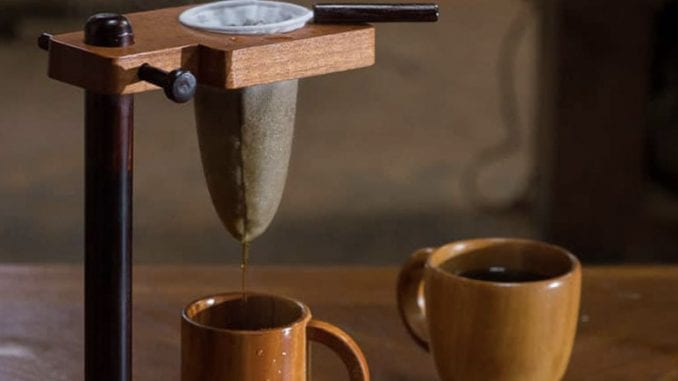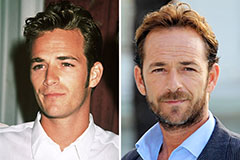The Scientific Research Behind Coffee Developing: How Temperature Level and Time Affect Your Drink
Comprehending the science behind coffee developing reveals that temperature and time are not plain variables yet crucial components that determine the beverage's taste profile and total top quality. The optimum developing temperature typically drops in between 195 ° F and 205 ° F, while the period of extraction differs considerably throughout various techniques. This interplay of aspects can result in a cup that is either unsatisfactory or wonderful. As we discover the subtleties of these elements, the question arises: just how can one efficiently balance temperature level and time to accomplish that best brew?
The Chemistry of Coffee Removal
The chemistry of coffee removal dives into the intricate processes that change raw coffee beans right into the aromatic drink enjoyed worldwide. This transformation mainly includes the solubility of numerous compounds existing in the beans, which are influenced by variables such as work size, water high quality, and the brewing approach used.
Throughout the brewing process, warm water serves as a solvent, drawing out soluble substances, consisting of caffeine, acids, lipids, and sugars, from the coffee grounds. Each compound adds to the flavor account, scent, and body of the last drink. For circumstances, acids are accountable for zesty and intense notes, while oils contribute to an abundant mouthfeel.
The removal procedure is not uniform; different compounds liquify at different rates. The first stages of developing extract acids and sugars, leading to an enjoyable level of acidity, while long term removal can result in bitterness due to over-extraction of unwanted compounds. Recognizing these chemical communications is important for enhancing developing methods, as the balance in between extraction time and water temperature can dramatically affect the overall top quality of the coffee. Inevitably, understanding the chemistry of coffee extraction is essential to achieving a all-round and flavorful mug.
Suitable Developing Temperatures
Locating the right developing temperature level is necessary for opening the complete potential of coffee flavors and scents - coffee brewing methods. Study suggests that the optimum array for brewing coffee lies in between 195 ° F to 205 ° F(90 ° C to 96 ° C) Within this variety, the extraction process efficiently liquifies the preferable soluble compounds in coffee beans, resulting in a tasty and well balanced mug
Developing at lower temperatures, such as listed below 195 ° F(90 ° C ), may lead to under-extraction, producing an acidic and weak brew with low-key tastes. Conversely, developing at temperatures exceeding 205 ° F(96 ° C) can bring about over-extraction, producing a rough and bitter preference because of the excessive dissolution of unfavorable substances, such as tannins.
In addition, the excellent brewing temperature level can vary relying on the coffee bean type and roast level. Lighter roasts often profit from a little greater temperatures to improve their complicated flavor profiles, while darker roasts might be better suited to lower temperatures to alleviate resentment.
Ultimately, preserving precision in brewing temperature levels is vital for accomplishing an unified equilibrium of tastes, making certain that every mug of coffee delivers a satisfying sensory experience.
Effect of Developing Time
Developing time plays a critical function in establishing the flavor profile and overall quality of coffee. Shorter developing times can result in under-extraction, leading to a weak or sour taste, as not sufficient soluble compounds are liquified.
Optimal developing time differs depending upon the approach made use of and the grind size of the coffee. A French press usually requires concerning four minutes, while espresso extraction is typically finished within 25 to 30 secs. It is important to adjust brewing time in conjunction with various other variables, such as water temperature level and coffee-to-water proportion, to attain the desired taste account.
Comprehending the impact of brewing time makes it possible for coffee lovers to improve their brewing techniques, ultimately improving the sensory experience of their cup (coffee brewing methods). With mindful interest to this variable, one can unlock the complete potential of the coffee, revealing its one-of-a-kind attributes and subtleties
Brewing Techniques and Their Impacts

For circumstances, approaches like French press straight from the source and chilly brew permit a longer steeping time, causing a fuller body and robust taste due to raised removal of oils and soluble solids. On the other hand, espresso developing makes use of high stress and a shorter extraction time, producing a concentrated shot that emphasizes intense flavors and a rich crema.
Pour-over strategies, such as Chemex or V60, offer a more regulated removal procedure, permitting the brewer to manipulate flow price and water distribution, which can boost brightness and quality. Percolation approaches cycle water via the coffee premises multiple times, leading to a more powerful, often bitter flavor.
Last but not least, using paper filters versus metal filters can likewise impact look what i found the last preference; paper filters usually produce a cleaner cup by trapping oils and fine bits, while metal filters permit more oils to pass through, contributing to a fuller mouthfeel - coffee brewing methods. Comprehending these nuances can boost the coffee experience dramatically
Tips for Perfecting Your Brew
A well-executed mixture can change also the easiest coffee right into an amazing experience. To attain this, focus to information is important. Beginning with high-quality, newly baked beans, as their taste profile reduces gradually. Grind the beans simply prior to brewing to make the most of quality, making certain the work size matches your brewing approach-- coarser for French press and finer for espresso.
Water high quality plays an important role; usage filteringed system water devoid of pollutants. The excellent developing temperature ranges between 195 ° F and 205 ° F(90 ° C to 96 ° C ) Too warm can blister the coffee, while as well trendy may under-extract tastes.
Timing is just as essential. For immersion methods, soaking for three to five mins is ideal, whereas drip approaches usually take about five minutes. Try out mixture times to find your favored stamina.

Conclusion
In recap, the elaborate partnership between temperature level and time is paramount in the coffee brewing procedure. Following ideal brewing temperature levels in between 195 ° F and 205 ° F, together with specific timing customized per technique, makes sure the desired taste account is achieved. Recognizing these scientific concepts encourages individuals to improve their brewing techniques, ultimately causing a much more delightful and well balanced coffee official statement experience. Mastery of these variables is important for any kind of coffee lover looking for excellence in their drink.
Understanding the science behind coffee developing discloses that temperature level and time are not plain variables but crucial components that dictate the drink's taste profile and total quality. Recognizing these chemical interactions is essential for enhancing brewing techniques, as the balance in between extraction time and water temperature can dramatically affect the general top quality of the coffee.Developing time plays an essential duty in identifying the taste profile and overall top quality of coffee. By focusing on these aspects-- bean high quality, grind size, water temperature, steeping time, and proportion-- you can elevate your coffee developing procedure, resulting in a continually remarkable mug.
In recap, the intricate partnership between temperature and time is paramount in the coffee developing procedure.
 Luke Perry Then & Now!
Luke Perry Then & Now! Rick Moranis Then & Now!
Rick Moranis Then & Now! Michael Oliver Then & Now!
Michael Oliver Then & Now! Ross Bagley Then & Now!
Ross Bagley Then & Now! James Van Der Beek Then & Now!
James Van Der Beek Then & Now!